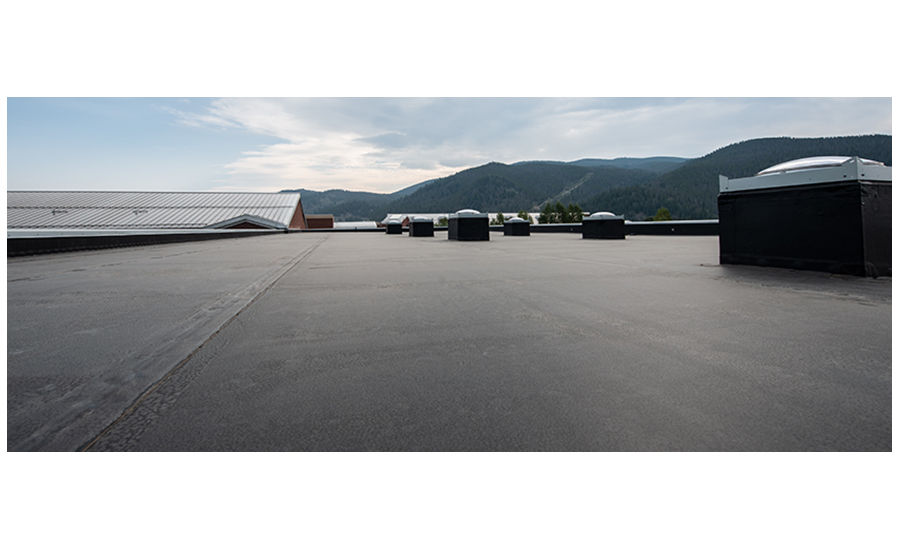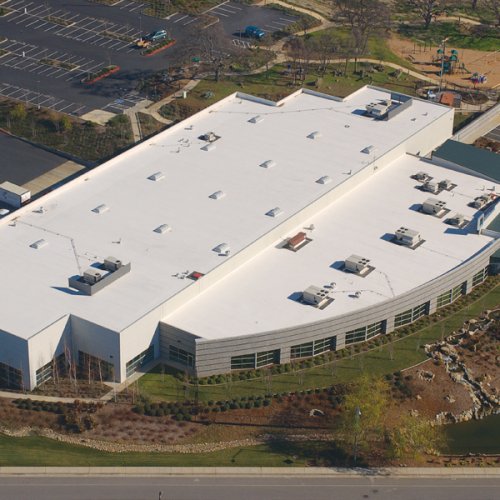We provide complete home renovation services.
- Austin Roofing Company
- Single Ply Roofing
Single Ply Roofing


Austin's Best Single Ply Roofing
Due to its durability, flexibility, and ease of installation, single-ply roofing is a popular choice for commercial and industrial buildings with a low slope or flat roof. Single-ply roofing systems offer excellent resistance to UV radiation, chemicals, and harsh weather conditions, making them a reliable and long-lasting option for flat or low-sloped roofs.
What Is Single Ply Roofing?
Single-ply roofing systems are commonly referred to as single-ply membranes. This type of roof is made of sheets of rubber and various synthetic materials or chemicals. Singly-ply membranes are designed to be installed in one layer. They are fastened, glued, or installed directly over a roof’s insulation to create a layer of protection. Many contractors prefer single-ply roofing on low-sloped roofs because they are easy to install over their current flat surfaces.
-
Weather resistance.
Energy efficiency.
Low maintenance needs. -
Durable.
Lightweight.
Easy to install.
PVC Single Ply Roofing System
PVC stands for polyvinyl chloride, a robust, stable, and strong vinyl material. This material has been used in the commercial roofing industry since the 1960s.
PVC installation is relatively straightforward. Once the roof deck is prepared, the roofers will lay the material, heat weld the seams, and attach the flashing. The heat-welded seams allow the roofing system to expand and contract with the building.
It is important that the new roof surfaces need to be cleaned where the roof is to be installed.
TPO Membranes
TPO is short for thermoplastic polyolefin. These single-ply roofs were introduced to the roofing industry in 1991 and were meant to be an improved version of PVC and a rubber membrane called EPDM (ethylene propylene diene monomer). Although TPO was initially designed to be a better alternative to PVC, each system has its pros and cons.
The TPO roofing system includes a layer of synthetic membrane and a reinforcing scrim that gives it added stability. It’s manufactured and sold in sheets, typically anywhere from 10-20 feet in width –with the wider material allowing for fewer seams.
Ethylene Propylene Diene Terpolymer (EPDM)
This is a flexible and versatile type of single-ply membrane that can be installed quickly. It is resistant to UV radiation, extreme weather conditions, and thermal shocks. EPDM roofing is expected to last for over 30 years.
Installation Process
The installation process of both single-ply roof systems is very similar. However, there are some options for how TPO and PVC are attached:
Mechanically
The membrane is attached using a mechanical anchor set. This is the most common type of attachment method.

Fully Adhered
A single-ply membrane has fully adhered when glued to the substrate using an adhesive.
Self-Adhered
This type of system installs fast, with little mess or odor.
Induction Heating
An induction heat tool transmits a calibrated electrical impulse to the metal plate causing it to heat and melt the backside of the roof membrane.
Benefits Of Single-Ply Roofing
1. Easy to install and long-lasting
Single-ply roofing is one of the easiest to install, especially on flat roofs. Whatever installation process you choose, the installation process is still far less complex than other systems.
A properly installed and maintained single-ply roof can last between 20 and 50 years.

2. Flexible and Lightweight
Even with multiple layers, single-ply roofing is considered lightweight compared to other commercial roofing systems. A light roof relieves stress on your commercial building.
In terms of flexibility, contractors can use single-ply roofs on any roofing system, even the most complex designs. Single-ply roofs can stay intact even if the building is renovated or expanded.
3. Extremely Durable
All types of single-ply roofing are durable. They can withstand tears, punctures, and blunt damage. They can also withstand extreme weather like strong winds and sudden temperature changes.
Single-ply roofing resists many kinds of chemical damage, too. It’s also fire retardant and has the unique ability of self-extinguishing.


Tips For Homeowners
Subscribe to our newsletter and get update in your inbox.
© All Copyright 2024 by ARC - Austin Roofing Company
